Weekend glacier combined photography, art, and science - Introduction to glaciers part I
Time to think about and look at glaciers, through a quick journey based on what I learned in my journeys and through my personal photos.
Introduction:
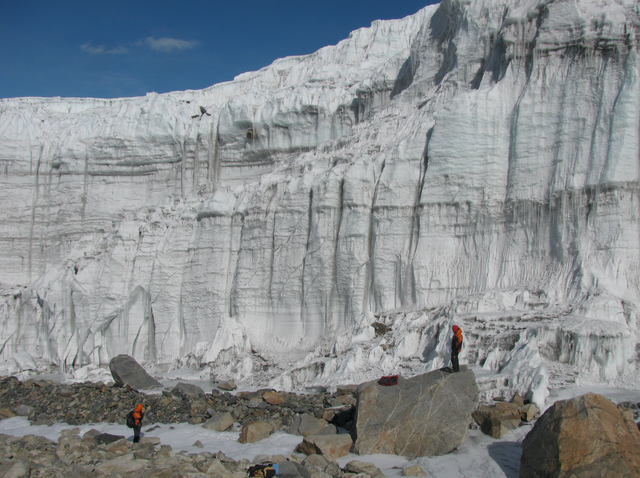
Personal photo of a living breathing glacier (#nofilter).
This post discusses about glaciers, including what they are, how they form and look at some original photos, later altered to make them more artistic to then bring us full circle in our understanding of glaciers.
So what is a glacier? A glacier is formed from long term accumulation of snow, that under pressure and changing temperatures changes from snow, i.e. solid form of H20 (water) into a denser form of solid water, ice. Part of this is due to recrystilisation, leaving something much more dense (ice) than something often light and much less dense (a snowflake).
Glaciers, move downhill due to the forces of gravity. They flow... thus are an amorphous solid, like glass. The crystals change shape as they ice flows. Ice is soft, but when ice flows, sometimes the thickness of the ice allows sediment to be entrained (i.e. carried) down gradient. Thus, ice helps erode mountains down. But ice itself is not an excellent erosive power. Erosion from ice is best accomplished when whatever the ice is flowing over is weak, such as sediments, or highly fractured rocks. Ice flowing over dense, intact rock (i.e. rock with limited natural flaws such as fractures (cracks), actually has limited erosive power, however ice flowing over fractured rock is very efficient at removing the material thus leaving a "fresh surface" oftentimes polished in areas that were recently glaciated. As the glacier flows downhill, eventually it gets warmer due to reduced elevations and warmer temperatures and here the ice starts to melt. For those that like music whilst they read, this is suitable for today's post.
While melting this flowing ice, or a glacier starts to deposit the materials carried underneath the ice, and as oftentimes happens in mountain regions, also deposits sediments that fell on top of the ice from the surrounding slopes. Clear as mud to now? This deposit that forms at the end of the glacier is called till and is composed of a fully mixed bag of materials from very fine clay (good for making pottery) all the way up to giant boulders. These deposits are unconsolidated, and oftentimes structureless (i.e. massive) and the form that this till is at the end of a glacier is called a moraine. There are many kinds of moraines, end moraines (as in the example above), laterals moraines (along the side), etc. But lets not get too bogged down with moraines. Nevertheless, what kind of moraine is in the photo above?
Well we are looking at one side of the glacier, so being that this is on the side, it is a lateral moraine. Here this is composed of large to huge blocks of rock.
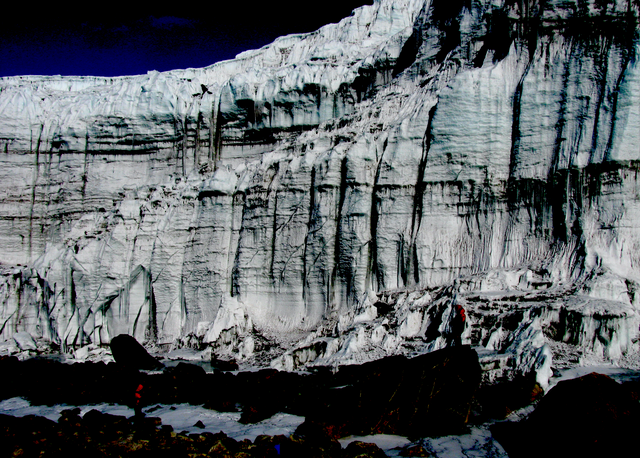
By playing with the colours on the previous photo we can see more of the laying in this glacier. How high is this ice wall? Without a means of measurement it is difficult to say but using the people for scale we can see that this perhaps up to 20 m high (assuming that the person is 2 m high in the photo).
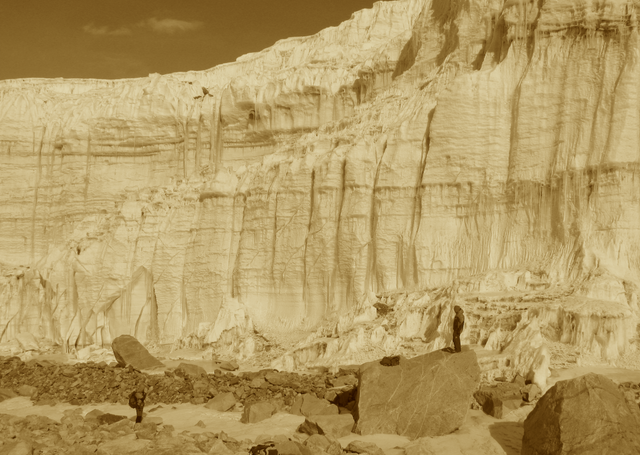
How does this look in sepia? Can you see anything different?
To me the fractures are easier to see as well as the icicles...
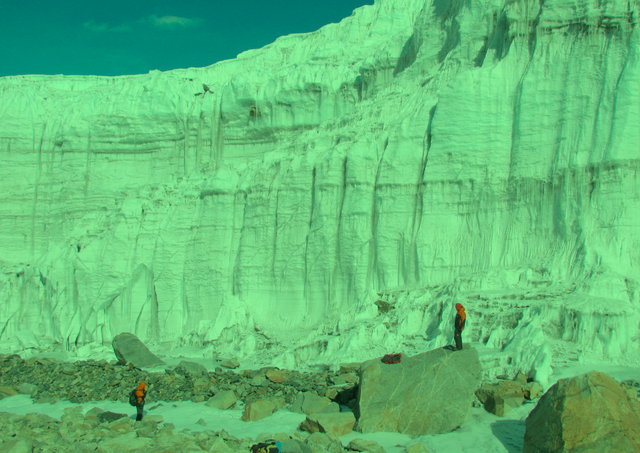
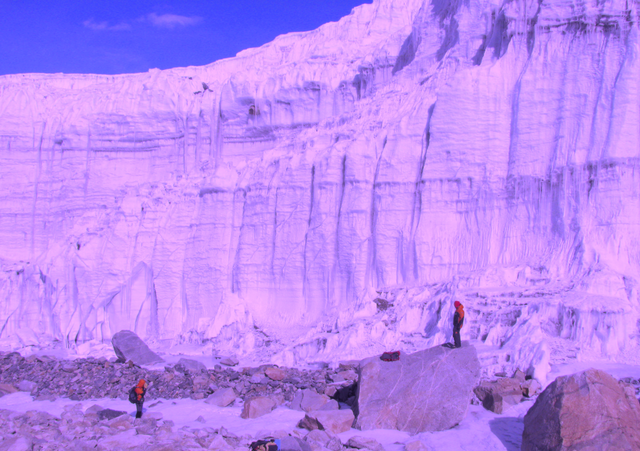
Transitioning to art. I personally feel that this photo looks really cool pink.
Art is science and science is art. Music added helps it all.
Conclusions
I hope this post helped you learn a bit of glaciers, how they form, what they are made of, what deposits they leave behind when they melt, how they move weak materials around the mountains and frankly, and most importantly how beautiful they are!
Reference:
*My own brain and personal photography collection.
Any questions? Please leave a reply and I will get back to you! :)
Speaking of Ice, time for us to listen to this classic from Ice Cube.
Original photos and text copyright @snowyknight
If you enjoyed this please check out my other posts on my blog.
For more related science please feel free to check out @steemstem and @geopolis and @utopian-io
For cool music related posts, please check out @illuminati-inc, they always have a great blog that selects cool music related posts.
This post is unconventional but mixing science, art, and music is the future right so we might as well start somewhere!!
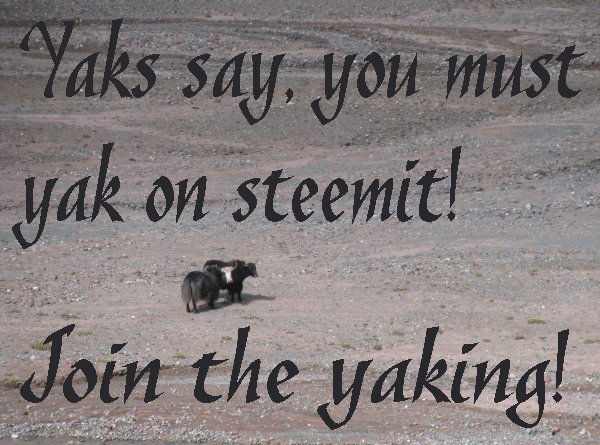

Extra extra bonus ice-related song...
"anything less than the best is a felony..."
Hello @snowyknight, thank you for sharing this creative work! We just stopped by to say that you've been upvoted by the @creativecrypto magazine. The Creative Crypto is all about art on the blockchain and learning from creatives like you. Looking forward to crossing paths again soon. Steem on!
Wow cool! Thanks for stopping by @creativecrypto and I am now following you and your cause. Really cool initiative and I look forward to checking out the work you support more!
Thank you!
Keep on writing and stay curious!